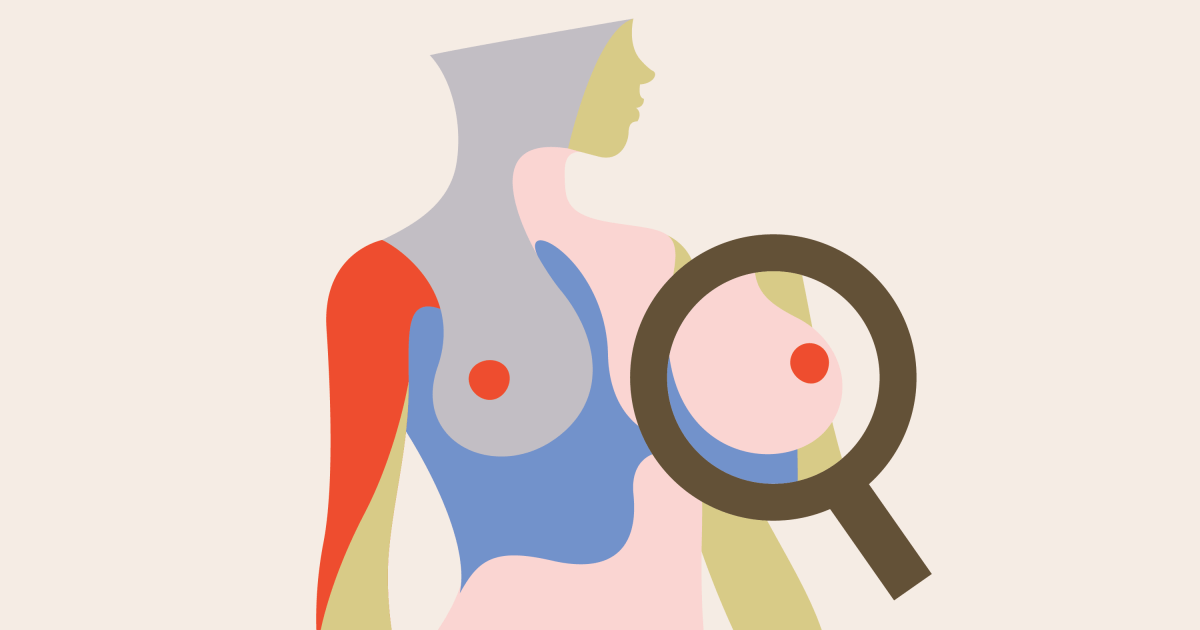Breast Cancer Overdiagnosis: One in Seven Women
- New research presented earlier this month concluded that one in seven women in the United States will be overdiagnosed with breast cancer.
- According to researchers, there are two sources of overdiagnosis: the detection of nonprogressive cancers, and the detection of progressive cancers that in the absence of screening would not have become symptomatic before other causes of death.
- About 40% of breast cancer overdiagnosis was attributed by researchers to nonprogressive cancer detections, and about 60% was attributed to progressive cancers.
During a presentation at the conference, Marc Rysar, Ph.D., assistant professor in population health sciences at Duke Cancer Institute, defined breast cancer overdiagnosis as the "mammographic detection of breast cancers that would not have caused symptoms or other harm in a woman's remaining lifetime."
Read MoreWhen Should I Get a Mammogram?
"One of the things that has happened because of our technology, our improvements in technology over the last just 20 years, is we are now able to diagnose some cancers that never would have been diagnosed in the past,” he said.
"We find some prostate cancers, some breast cancers, even some lung cancers that yes, they existed in the past, but we didn't have the ability to image that small or to image those types of cancer. We didn’t have the ability to stick a needle in and biopsy such a small lesion.”
Dr. Brawley explains that some of the cancer being found now with new technologies was “never destined at a genetic level to grow, spread and kill.”
“They look like cancer but they don’t need to be cured. This is a hard thing for even doctors to accept. In the 1980s, it was always find it early and cut it out. Now, we’re saying there’s certain things that we should find early and watch,” Dr. Brawley says.
Breast Cancer Overdiagnosis Study Details
Rysar’s research included 35,986 women who underwent a combined 82,677 breast cancer mammogram screenings at a Breast Cancer Surveillance Consortium facility between the years 2000 and 2018. (The median age of women involved in the study was 56 years old, and 55.6% of study participants were white.)
Furthermore, mammograms detected 90% of the 718 breast cancers found during the study's period.
When You're Called Back After a Mammogram: Breaking Down the Numbers
Based on researcher's estimates of things such as nonprogressive cancer detections, tumor latency time that passes as the tumor grows and screening episode sensitivity of the mammography technology, researchers predicted the overdiagnosis rate. For women ages 50 to 74 who have yearly screenings, the rate of overdiagnosis is 15.3%. This includes 6% for nonprogressive cancers and 9.3% for progressive cancers cancers that are growing and causing the patient issues.
About 40% of breast cancer overdiagnosis was attributed by researchers to nonprogressive cancer detections, and about 60% was attributed to progressive cancers. (The progressive cancers also had longer latency periods time lapses.)
Getting to Know Your Breasts with Self-Exams
Additionally, when researched looked into breast cancer overdiagnosis by screening round, the overdiagnosis rate during first screens for women at age 50 was estimated to be 11.5% But that number rose to a whopping 23.6% during last screens for women at age 74.
"This increase is due to the competition of tumor latency and competing other-cause mortality," Rysar said during his presentation. "Because older women are more likely to die (of) a competing risk during tumor latency, they are also more likely to be overdiagnosed."
Learn more about SurvivorNet's rigorous medical review process.


